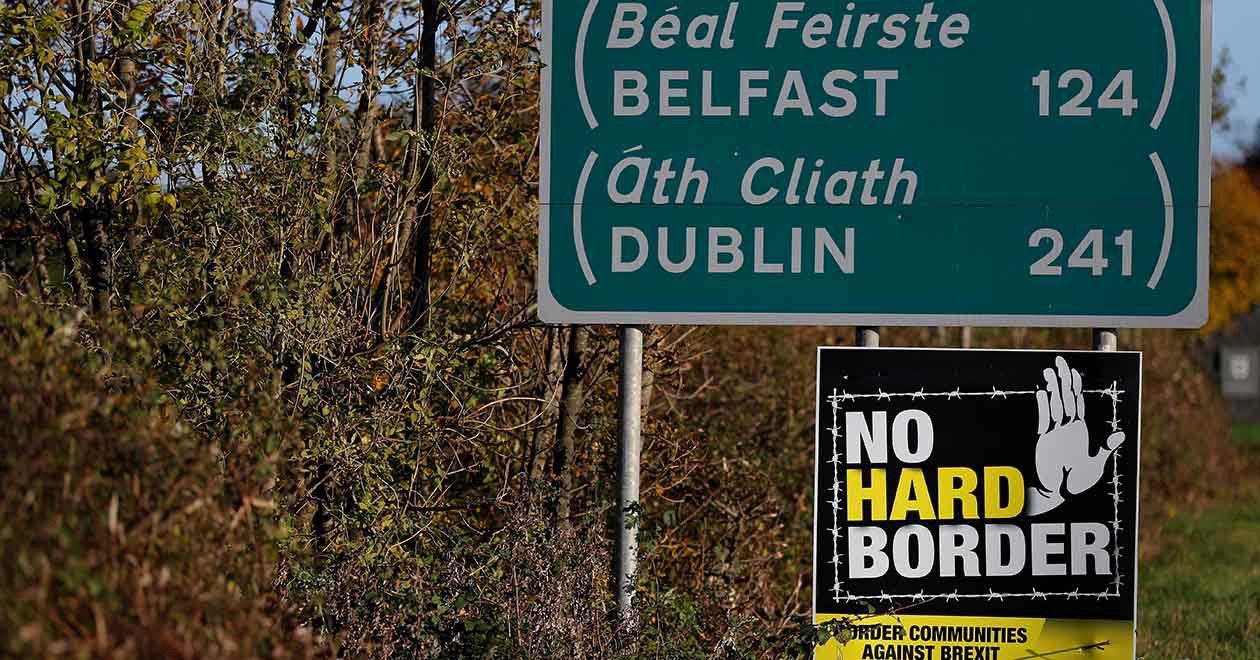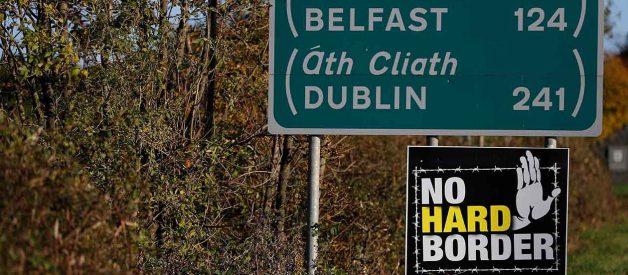This appeared in The Millennial Source

On Friday, January 31, 2020, the United Kingdom officially left the European Union after over three years of uncertainty and political upheaval. However, many unanswered questions remain, perhaps the biggest related to the border between the Republic of Ireland and Northern Ireland.
Throughout the negotiations, the Irish border has been a roadblock to consensus. Even the Brexit deal that finally passed failed to address concerns. With the contentious history between the UK and Ireland, it remains to be seen how the two countries will maintain their uneasy peace.
Theresa May?s failed Irish backstop plan
This past Friday marked the end of a controversial period in the UK?s history when, stewarded by Prime Minister Boris Johnson, the country left the EU. Much still remains to be negotiated between the UK and the EU, especially concerning trade, but issues that kept the previous prime minister, Theresa May, from completing Brexit have largely been addressed.
But there is one issue in particular that has often appeared irreconcilable: the Irish border. Any Brexit deal had to avoid a hard border that stifled free movement of citizens, while still respecting the trade borders between the two countries.
May?s proposal included a so-called ? backstop? that would have kept all of the UK within the EU market. For those who wished to leave the EU, this was an unacceptable option. Consequently, May was unable to get her version of the Brexit deal through Parliament, leading her to announce in May of 2019 that she would resign as PM.
Boris Johnson?s Brexit deal
May?s successor, Boris Johnson, offered a slightly different solution to the problem. While The Guardian reported that the two prime ministers? deals were ?essentially? the same, the backstop idea was replaced with a concession that would allow Northern Ireland to remain aligned with the EU?s trade arrangements for four years after December 2020 (the deadline for all UK/EU trade negotiations to be completed).
Once that four year period ends, Northern Ireland can vote on whether to stay in the EU or join with the UK. Critics of this arrangement say it could lead to Northern Ireland choosing to permanently remain separate from the UK for purposes of trade. For the time being, though, it prevents a hard border between Northern Ireland and Ireland.
Why is the Irish border such a big deal?
The UK vote to leave the EU in June 2016 meant four separate countries would be leaving the Union: England, Scotland, Wales, and Northern Ireland. The Republic of Ireland (or simply Ireland), which shares a border with Northern Ireland, is not part of the UK but is a member state of the EU.
As an island, Northern Ireland is the only member of the UK to share a border with Ireland. Prior to Brexit, when both Ireland and the UK were in the EU, the official border between Ireland and Northern Ireland was, for all practical purposes, immaterial. Crossing from one country to the other was simple because both nations were EU members.
Despite both being Irish countries, the split between Ireland and Northern Ireland is rooted in violence and deep political divides. Locals are now concerned that years of peace at the border may soon come to an end.
The history of violence in the Troubles
The border between Northern Ireland and Ireland goes back to 1921. Prior to the establishment of Northern Ireland, forces within Ireland wanted to separate from the British Empire. After years of violence, an uneasy agreement led to Northern Ireland?s being established as a separate state, while the Republic of Ireland was deemed an ?Irish Free Zone? (though actual independence didn?t come until 1937).
Relative peace existed on the Irish island until the 1960s, when an economic downturn and political divisions birthed a three-decade conflict known as ? The Troubles.? This conflict raged between pro-British Protestants and separatist Catholics who wanted Northern Ireland to leave British rule and reunite with Ireland.
As a response to independence protests, British soldiers were sent to occupy Northern Ireland and guard the Irish border. During their occupation, British soldiers killed hundreds of Irish civilians, including during the infamous ? Bloody Sunday? massacre on January 30, 1972, that resulted in 13 civil rights protestors being killed.
Leading the fight for Irish independence was the Irish Republican Army (IRA), which the British deemed a terrorist group. The IRA were responsible for dozens of bombings throughout Great Britain, resulting in numerous deaths, including those of children.
The Good Friday Agreement opens the borders
After 30 years of violent conflict, the British and Irish governments negotiated peace in the Belfast Agreement of 1998, also known as the Good Friday Agreement, as that was the day it was signed. The agreement kept Northern Ireland in the UK but created the 108-member Assembly of Northern Ireland to govern the country.
Additionally, the agreement required that the British government remove the militarized security checkpoints at the border between Ireland and Northern Ireland. This effectively removed the hard border between the two countries and has helped maintain peace as citizens from both countries can move freely across the border.
The agreement also provided the citizens of Northern Ireland with the right to vote to leave the UK if they so desired.
Originally published at https://themilsource.com on February 4, 2020.


